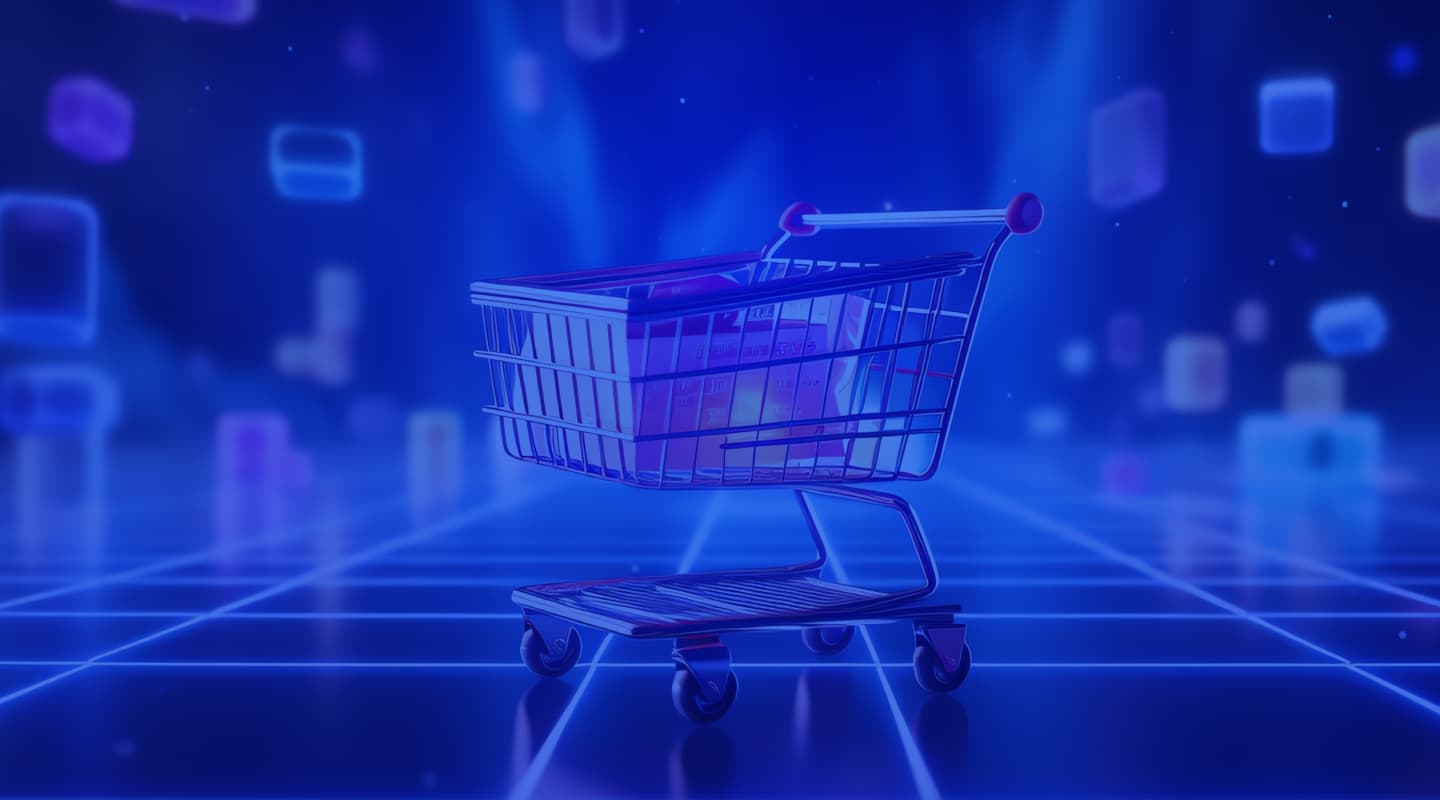The importance of the customer experience (CX) in ecommerce can’t be overemphasized. In one recent survey, more than half the respondents ranked excellent customer service even more important than price. Another study indicates that almost a quarter of shoppers will abandon a brand after just one bad experience.
No doubt, great customer experience gives ecommerce sites a competitive advantage, and it’s been shown to deliver higher conversion rates, increased loyalty, improved retention (and by extension, LTV) and stronger brand perception.
In this article, we’ll:
-
help you understand the customer journey and details of ecommerce CX
-
show you where to look and how to identify CX problems
-
share top ways to improve CX and reliable methods for measuring outcomes
-
help you solve for issues like high bounce rates and cart abandonment
-
provide guidance on setting up ownership of CX efforts, getting buy-in, and fostering team cooperation
Understanding the ecommerce customer experience
Ecommerce customer experience goes beyond finding a product and adding it to a shopping cart. It’s the holistic experience that customers have across all the touchpoints and interactions with an online brand – and it arguably begins before the customer even goes online.
Today, the customer journey seems almost chaotic in comparison with the clear paths that it comprised only a few years ago, with customers constantly hopping around from one touchpoint or channel to another. Still, the journey can be summarized in six stages.
-
Awareness. Nothing can happen until a customer knows that your product exists. Awareness can come from many different sources: advertising, PR, social media, word-of-mouth or, perhaps most important, search. Understanding where a customer came from, when possible, allows you to present the screen with the content most likely to lead to a conversion.
-
Consideration. This is the stage where you face off with your competitors in the customer’s mind. Obviously, you’re not always going to win. But you can increase your chances in two important ways. The first is providing complete, accurate product information. Lack of sufficient information has historically been a significant factor in lost sales. AI-powered chatbots are now available to further help customers get the information they want. The second tactic is providing social proof. Ninety-five percent of customers read product reviews before buying.
-
Conversion. The keys to success at this stage when the customer actually buys are making it simple and avoiding surprises. Simplicity means eliminating friction from the process so potential customers don’t give up due to frustration. When it comes to surprises, the biggest culprit is extra costs (including shipping), which causes 48% of customers to abandon their cart.
-
Fulfillment. This stage includes order processing and shipping. Success boils down to keeping promises about delivery. Many retailers use automated email or texts to keep customers apprised of progress, e.g. “Your order has shipped.”
-
Retention. Obtaining repeat purchases and loyalty depends to a great degree on what has happened in stages 2 – 4. Also, the customer has to be pleased with the product itself. Assuming these conditions are met, there are still tactics that can help with retention. For example, you can send a thank-you email, and follow it up with occasional special offers or new product announcements – so long as they’re not so frequent as to be annoying.
-
Advocacy. You can’t control word-of-mouth, but you can and should make it easy for customers to post reviews.
A typical customer journey (and its CX pitfalls)
Even simple purchase journeys are filled with opportunities to either delight or lose a customer. Here’s how a common shopping experience can unfold — and where customer experience (CX) friction often creeps in.
1. Awareness
A customer sees their neighbor using a “weed whacker” and decides to buy one. They visit a major hardware retailer’s website and type “weed whacker” into the search bar.
CX friction point: If the site’s search engine doesn’t recognize “weed whacker” as a synonym for “string trimmer,” they may hit a dead end — even if the product is in stock.
2. Consideration
Assuming the search works, they land on a product listing page with electric, gas, and cordless options. They filter down to electric and start comparing models.
CX friction point: Poor product categorization, irrelevant results, or weak filters can overwhelm shoppers and cause drop-off.
CX friction point: Lack of detailed descriptions, specs, or quality images often leads to indecision — and more than half of shoppers abandon purchases for this reason.
3. Conversion
They select a model, add it to their cart, and choose Buy Online, Pick Up In Store (BOPIS). During checkout, they’re offered a discounted pair of gloves and decide to add them.
CX opportunity: Smart upsell offers and flexible fulfillment options (like BOPIS) can increase cart size and satisfaction.
4. Fulfillment
The next day, they drive to the store and pick up their items.
CX friction point: A clunky or delayed in-store pickup process can erode trust, even after the sale is made.
5. Retention
A few days later, the brand sends a follow-up email with care tips and accessories for their new tool.
CX opportunity: Helpful, non-promotional content post-purchase builds loyalty and keeps your brand top of mind.
6. Advocacy
They receive a request to leave a product review and, being satisfied, they leave a glowing five-star rating.
CX opportunity: Prompting for reviews at the right time can turn happy customers into advocates who influence others.
Mapping the customer journey: a foundation for better ecommerce CX
Before you can improve the customer experience, you need to see it clearly – from first touch to post-purchase. Only then can you pinpoint the moments that drive engagement, friction, or drop-off.
Customer journey mapping helps ecommerce teams visualize how buyers move across touchpoints — and spot where the experience is working, and where it’s breaking down.
Start with Personas
Most journey mapping begins by defining customer personas — your key audience segments. These aren’t just demographics and purchase history; they include needs, motivations, and behavioral cues that help teams empathize with the buyer. Input often comes from customer interviews or front-line staff.
Identify All Touchpoints
Next, map every touchpoint a persona might encounter — not just your ecommerce site, but also paid ads, organic search, social media, influencers, email, support reps, even physical stores or print catalogs. A thorough inventory reveals how interconnected (or fragmented) the experience really is.
Align Touchpoints to Journey Stages
From there, organize touchpoints across each phase of the journey: Awareness, Consideration, Conversion, Fulfillment, Retention, and Advocacy. This gives you a clear, structured view of how customers flow — and where they stall.
Go Beyond Visualization
While journey maps offer visual clarity, tools can help offer even more. Many integrate cross-channel data from siloed systems, helping unify teams across marketing, product, and CX. The result: a shared view of the customer and a clearer path to optimization.
Tools to help track the journey
Web analytics platforms
Obviously, the journey that you plan for your customers may not always be the one that they take. You need to know what’s actually happening. One of the best-known tools for this is Google Analytics 4 (GA4). which tracks your customers’ entire purchase journey, including what device they used. You can evaluate the efficacy of all your various acquisition channels as well as the performance of all your touch points.
Behavioral analytics platforms
In addition to the type of data GA4 provides, there are tools like Hotjar, Amplitude, and FullStory that let you examine how users click, scroll and move their mouse on individual pages. They do this with heat maps where areas of high activity are red and orange while those of low activity are blue or green. They also record actual sessions for replay and analysis. These replays are particularly helpful for understanding why certain pages are failing to perform as desired. All ecommerce platforms like Shopify and BigCommerce have some built-in metrics dashboards, as well.
Journey Orchestration Platforms
Finally, you should be aware of journey orchestration tools like Bloomreach and Adobe Journey Optimizer that offer an all-in-one option for creating the customer journey, from data aggregation for personalization to journey design linking touchpoints to content to real time reporting.
Who owns the ecommerce customer experience?
While the ecommerce operations of any business almost always have a nominal leader, the task of building and maintaining the CX is cross-functional.
-
Product teams are responsible for much of what the customer encounters on the site, such as navigation, product page content and check-out.
-
Marketing will be in charge of the data behind personalization as well as operations related to the awareness phase such as email marketing and paid media.
-
Customer service is another function that’s essential to the CX, but it may not have any direct connection to these first two functions.
-
Finally, logistics – fulfillment, shipping, returns – often has a reporting structure that’s not directly connected to any ecommerce team, although logistics is a big part of the customer’s post-purchase experience.
All of these various teams have to coordinate to support an excellent CX. The site itself must arrange for traffic spikes created by advertising. Customer service reps should have access to customer purchase histories. What’s offered online needs to be available in inventory. These are only a few examples.
How to align cross-functional teams
Aligning the various teams is a multi-step process.
1. Set shared customer-centric OKRs. Product teams, marketing and logistics don’t automatically measure success in terms of the CX. Helping them understand how their processes affect the CX and setting CX-related goals is an important first step.
2. Get stakeholder buy-in early on. Get input from all the various teams involved and make them feel included. They may well have ideas for CX improvements you didn’t think of.
3. Use metrics everyone can understand. The net promoter scores (NPS) and customer effort scores (CPS) scores detailed below are good performance measurements that don’t require ecommerce expertise to understand.
4. Created a shared CX dashboard so that everyone involved can be aware of performance on a near-real-time basis.
5. Monitor, measure and reiterate, focusing on whichever touch points are not performing up to desired standards.
Key components of the ecommerce customer experience
Personalization in ecommerce
Personalization has evolved dramatically, from simply inserting a name at the beginning of an email message, to customization based on broad categories, to AI-powered “hyper-personalization,” which tailors the CX at every stage of the customer journey on an individual level. Examples include:
-
Email and SMS messages where both content and timing are determined by customer behavior
-
Personalized search results ranked on known customer preferences
-
Landing pages based upon where your customer came from (an email campaign, a competitor’s site, etc.)
-
Personalized product carousels that may created based on a combination of customer data and external factors, such as time of day, geographical location or even weather
-
Dynamic pricing at the check-out stage
There are now a number of AI-powered solutions that let you aggregate data from disparate sources (purchase history, pages visited, emails opened, etc.) and then match the content you deliver to potential customers.
These include Algolia AI Recommendations, Alloy, Dynamic Yield, Klaviyo, Rebuy, and Segment. Each of these offerings has a slightly different scope and focus, and the details are worth exploring.
While many different sources of data can contribute to successful personalization, two are particularly important.
-
Zero-party data. This is information you have requested and consumers have voluntarily provided, such as an email address, communication preferences, name and address, and so on. Consumers are surprisingly willing to provide this information. For example, one study showed that 44% of the respondents were willing to share their social profile data.
-
First-party data. This is information you have gathered by observing your customers’ behavior such as their browsing patterns on your site, their purchase history and so on.
Zero party data, while crucial, brings with it special responsibilities. It belongs to the category of personally identifiable information (PII). Its security is subject to government regulation almost everywhere.
Personalization pays off. It has been shown to increase sales by as much as 20%. And it’s well-received by customers. In fact, over 70% of consumers already expect personalization in their online shopping experience.
Seamless omnichannel experience
To meet the expectations of today’s consumers, great customer experiences can’t be confined to the ecommerce site alone – it has to extend to every touchpoint in every channel, whether it’s an online transaction, an in-store purchase, a reference in social media, an interaction with a customer care rep.Customers don’t think of themselves as interacting with a channel; they’re interacting with your brand. Inconsistencies in pricing or product availability create a negative impression. In short, consistency across all channels is table stakes.
Two classes of solutions that can help you achieve omnichannel consistency and provide great CX across all touchpoints are customer data platforms (CDPs) and unified commerce platforms.
CPDs
CDPsextract data from relevant sources like ecommerce, CRM, email platforms and in-store POS systems.
They then perform identity resolution so that they “know” individuals with different names across different systems (J. Smith, John Smith, etc.) are the same person. The result is a database that has a single, comprehensive view of each customer, which can be updated in real time.
This allows you to:
-
personalize the customer experience across all your channels
-
make product recommendations in one channel based on behavior in another and in general
-
avoid sending the same customer multiple identical communications
Popular CDP products include Salesforce Data Cloud and Adobe Real-Time CDP.
Unified commerce platforms
The primary goal of these platforms is to integrate the infrastructure that supports these transactions. For example, they centralize product catalogs, inventory and pricing to help you avoid inconsistencies. They also enable cross-channel transactions such as BOPIS or return anywhere policies.
Examples of unified commerce platforms are Shopify POS and Salesforce Commerce Cloud.
Website and app usability
It goes without saying that intuitive navigation, intelligent search capabilities and accessibility features are central to the ecommerce CX. It’s less obvious that the mobile experience is becoming increasingly important, if not dominant.
Many consumers – 79% according to one study – make online purchases with their mobile device rather than a laptop or desktop computer.
There are strong arguments that a mobile-first design approach with app-native, platform-specific code improves the CX significantly in comparison with “mobile responsive” approaches. Platform-specific apps will have a more familiar style to the user. They can make use of platform capabilities, like GPS or the camera. They usually run faster, avoiding delays that can prompt customers to abandon the site.
The success of apps in ecommerce has spurred a trend towards progressive web apps (PWAs) which connect directly to the ecommerce site rather than through a browser. They are easy to install, easy to use with single-click access to the site and are often significantly faster.
Streamlined checkout process
The checkout process is the last step in the ecommerce sales process, and it should not be a barrier. There are two areas that deserve attention:
-
Eliminate friction: this means allowing guest checkout, so no one has to make a long-term commitment in order to make a purchase. To the extent that forms are necessary, they should have the fewest number of fields possible, and enable autofill. Also, the design of the checkout screen should be optimized for mobile devices.
-
Offer multple payment options: you should offer multiple payment options beyond credit and debit cards. Consider offering payment via digital wallets (which accounted for 50% of all ecommerce payments globally in 2023), or offering a buy-now-pay-later which contributes to higher AOV.
Finally, it’s a good idea to offer live chat support.
Efficient customer service
Great service drives loyalty — in fact, 93% of customers are more likely to make repeat purchases after a positive service experience. But what qualifies as “great” is evolving.
Today’s customers expect real-time, multi-channel support — whether through live chat, call centers, SMS, email, or even social media. And they want seamless, fast responses across all of them.
Delivering on those expectations is resource-intensive, but there are ways to scale efficiently:
-
Well-designed FAQ pages offer effective self-service for common questions
-
AI-powered chatbots handle routine inquiries instantly and escalate complex issues to live agents
-
Agent enablement tools like templates and response scripts improve speed and consistency
-
Customer data integration — giving agents access to purchase history and preferences — allows for more personalized, helpful interactions
These strategies don’t just improve customer satisfaction — they also reduce time-to-resolution and help your team do more with less.
Harnessing technology for enhanced experience
AI and machine learning
AI adds a new dimension to many aspects of the ecommerce CX. This is because AI doesn’t operate on pre-determined rules like older algorithms. Rather, it makes decisions based on what it has learned will work best. For example, rather than offering every customer who buys ski boots the same product recommendation for a cross-sell, e.g. ski socks, it will offer each customer the product which that particular customer is most likely to buy based on that customer’s previous purchases, browsing history and perhaps other data gleaned from similar customers. In addition to product recommendations, AI can improve predictive search (also known as auto-complete) and optimize dynamic pricing.
The details of exactly how AI will operate can vary significantly, sometimes being based on individual shoppers as described above, and sometimes on segments. The main point is, it influences the customer experience in real-time in ways that not only improve the CX but have a positive effect on the bottom line through higher conversion rates, higher AOVs and other financial criteria.
One other AI capability is important. Generative AI solution, similar to the now-familiar Chat GPT or Gemini, can power chatbots to answer questions that arise, and also generate follow-up emails and other customer communications.
Augmented reality (AR)
Augmented reality (AR) is another technology that enhances the customer experience in new ways that can lead to greater engagement. The most well-known is virtual try-ons, which let customers see themselves wearing a garment, a pair of glasses or other wearables before they decide to buy. Home previews take a similar approach, letting buyers see what a couch would actually look like in their living room. AR can help customers configurate a product. It can also show 3D views, including exploded views of complex items. Primary players in this area include Shopify AR, Vectary and Threedium.
Shopping guides
Algolia has introduced an all-new AI feature called Guides that enhances a B2C or B2C ecommerce catalog by creating an informative shopping guide on products and services offered. It’s a way for merchants to instantly give their customers information about the kinds of products and services that they’re looking for throughout their journey.
Building customer loyalty
The best way to build customer loyalty is to consistently give your customers the products they want with a buying experience that satisfies them. Of course, these are table stakes. There are several ways to go beyond the basics.
Loyalty programs
One winning tactic is to establish a loyalty program. 55% of customers frequently or almost always sign up for a loyalty program when the opportunity is presented. These programs require significant effort to set up, but when properly designed they can definitely deliver positive ROI. Also, they are a valuable source of customer data.
Most loyalty programs are, at their core, a numbers game — a tradeoff between what you give away (discounts, perks) and what you hope to gain (repeat purchases, higher customer lifetime value). And customers are eager to join: the average U.S. consumer belongs to over a dozen loyalty programs.
Many programs follow a familiar format:
These can be managed easily with off-the-shelf platforms built to track, automate, and scale loyalty incentives.
But loyalty isn’t always transactional.
Some brands build deeper connections by offering exclusive experiences — early access to products, special events, or personalized perks that feel more VIP than coupon.
Others take an emotional approach, fostering loyalty through shared values. Whether it’s sustainability, ethical sourcing, or community involvement, a brand’s stance can inspire customer commitment that goes beyond price or convenience.
If your brand stands for something, make sure it shows — not just in your messaging, but across the entire customer journey. That’s where brand marketing becomes a loyalty tool in its own right.
Post-purchase engagement
The post-purchase experience, beginning with fulfillment, is another point at which you can build trust and loyalty. Customers will remember when the product arrived on time (or later than promised!) and they will certainly remember if it was easy to solve any problems that arose. Also, since post-purchase events occurred most recently, they will be fresher in customers’ minds.
You should definitely provide delivery tracking and send a thank-you email once you know a package has been delivered. You should also proactively ask for a review and make that process simple. Many companies have begun to include something extra — stickers, candy, or other audience-pleasers — in their fulfillment to surprise, delight, and be memorable.
You should reach out over time with personalized reminders, special offers and the like.
One other aspect of the post-purchase experience that’s not often mentioned is returns. Making it easy to return items removes a reason not to buy in the future, and also builds loyalty. According to one study, 92% of customers are more likely to make repeat purchases when the return process is simple.
Social proof and community
A new phenomenon has entered the loyalty equation in the past few years: influencer marketing. Once an area of marketing that was almost incidental, influencers have become focused on their online activity as a business. Potential customers who have no loyalty to your brand may feel a strong loyalty to an influencer who recommends it, and this can certainly influence sales. With today’s technology, for example, customers can clip an image from an influencer site, paste it into a search box and go directly to the product.
User-generated content (UGC) can evoke a sense of trust that borders on community. Online consumers in general don’t trust advertising, but customer reviews receive a trust rating of over 75%. You should leverage positive reviews and integrate them into product pages, email messages and paid social.
AI Search
The results users need to seeAI Browse
Category and collection pages built by AIAI Recommendations
Suggestions anywhere in the user journeyAdvanced Personalization
Tailored experiences drive profitabilityMerchandising Studio
Data-enhanced customer experiences, without codeAnalytics
All your insights in one dashboardUI Components
Pre-built components for custom journeys




